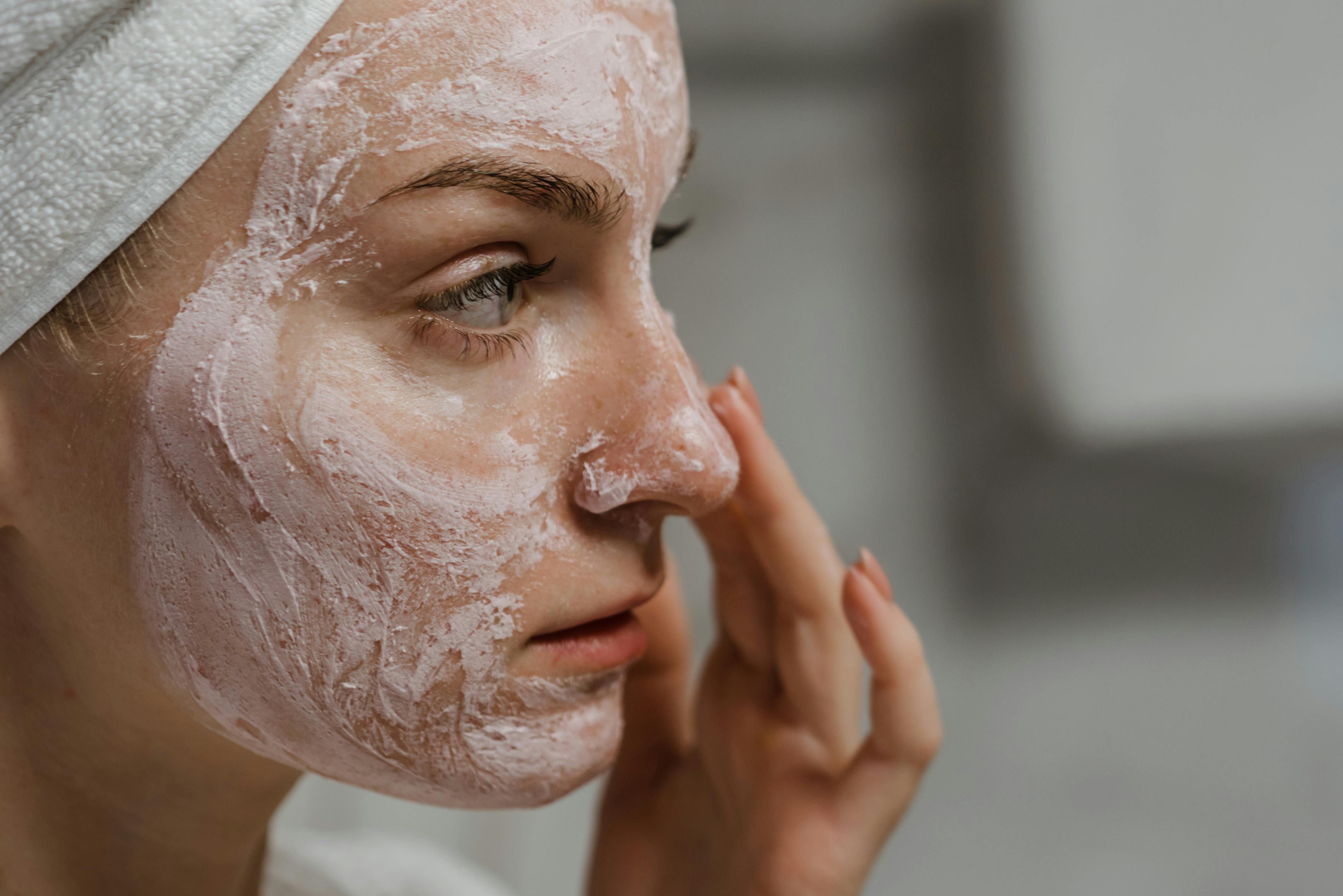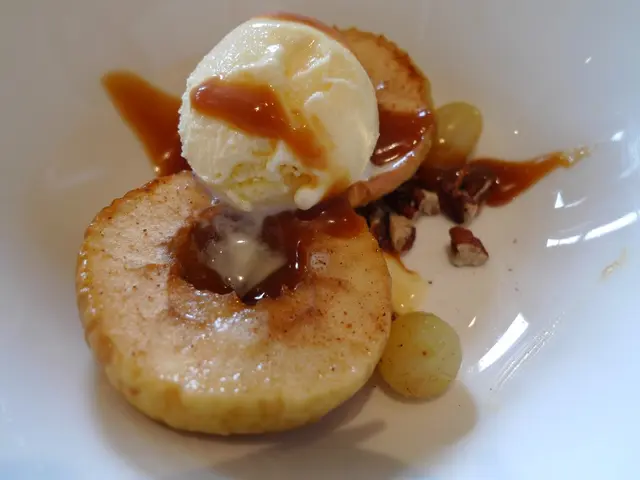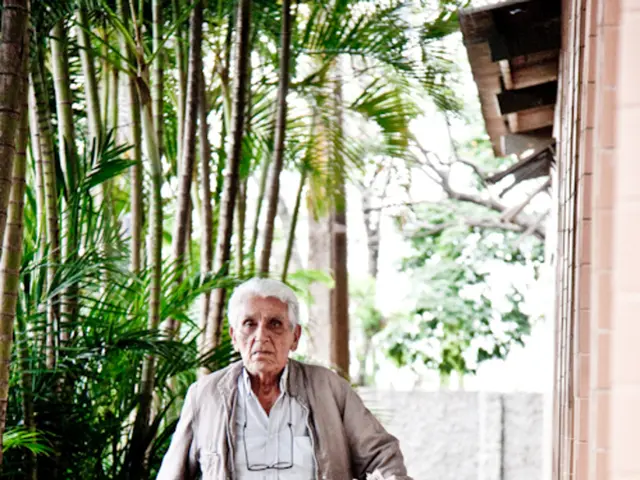Top-tier At-Home and Expert Age Spot Elimination Methods
Updated Article:
Get Rid of Those Pesky Age Spots with These Handy Solutions!
Say goodbye to those unwelcome, smooth, dark spots on your skin - we're talking about age spots or lentigines here, folks. They usually appear due to too much fun in the sun (that's our permission to soak up the rays right there).
But hey, no biggie, since these spots are generally harmless, we've got some cool solutions for ya to make 'em less... spot-tacular!
Best Ways to Beat Age Spots
Let's dive right in! Here's a mix of professional treatments and DIY remedies to make those age spots disappear.
Prescription Treatments
If plain ole' home remedies aren't cutting it, there are prescription options available for your skin-clearing crusade. Doctors might prescribe:
- Topical steroids to reduce inflammation
- Hydroquinone to lighten the dark spots
- Retinoids to speed up cell turnover and create smoother skin
Just keep in mind that these treatments may cause temporary side effects like redness, swelling, burning, dryness, and itching. If you experience any of these for more than a few days, give your doc a call.
Over-the-Counter (OTC) Products
Don't wanna shell out for prescription creams? Take a stroll down the beauty aisle and check out OTC products that contain alpha hydroxy acid, glycolic acid, kojic acid, deoxyarbutin, or even a combo of these hyperpigmentation-correcting ingredients. Go for creams and serums that also offer skin-smoothing and hydrating benefits.
Laser and IPL Treatment
Laser and intense pulsed light (IPL) treatments are perfect for blasting those spots into oblivion - they work by penetrating below the skin's surface. If you're worried about sun damage post-treatment, remember to protect your skin! Fair warning: Temporary discoloration, redness, and after-laser-resurfacing effects may occur, so be prepared for a week of downtime.
Cryotherapy
This ice-cold treatment uses liquid nitrogen to freeze those dark spots away. Though it won't rid you of all your age spots, it'll make 'em less visible. Keep in mind, it can cause temporary skin irritation or discoloration.
Dermabrasion
Embrace the smoothest skin ever - this exfoliation-intensive treatment will remove your age spots as it strips away layers of your skin. Be ready for redness, irritation, and scabbing!
Microdermabrasion
This gentler alternative to dermabrasion involves polishing the skin. Though it may take several appointments to see results, the reduction in fine lines, wrinkles, and dark spots will be worth it. Warning: This treatment may worsen rosacea.
Microneedling
This process uses tiny needles to create micro-wounds that stimulate skin cell turnover. It helps reduce wrinkles, boost collagen production, and improve elasticity - all while lightening dark spots. However, do keep in mind that this treatment is unsuitable for people with certain skin conditions or infections.
Chemical Peel
A chemical peel involves removing the top layer of skin with an acid or enzyme solution. Though this treatment may cause temporary skin flaking, it's generally safer than dermabrasion and can be tailored to your skin type.
Shine, Don't Sunburn!
Remember: applying sunscreen daily with an SPF of at least 30 is crucial for protection from harmful UV rays - before, during, and after treatments.
Home Remedies
If you prefer a DIY approach, give these harmless, potentially age-spot-reducing concoctions a whirl:
- Lemon juice: The acidity and Vitamin C in lemons may help exfoliate and lighten dark spots.
- Apple cider vinegar: Its acetic acid may help lighten dark spots.
- Aloe vera: This plant's aloin can help treat hyperpigmentation.
- Green tea: Green tea extract may have skin-lightening effects.
- Red onion: Dried red onion skin might help lighten dark patches of skin.
- Turmeric: Its active ingredient, curcumin, may reduce melanin production.
- Papaya: Alpha-hydroxy acids in papaya might help exfoliate skin and reduce hyperpigmentation.
Pro tip: Be sure to patch test any home solutions before regular use, as these ingredients may cause skin irritation. Consult a dermatologist for persistent or severe pigmentation issues.
Lighten Up, Age Spots!
Age spots aren't a given part of aging. These dark spots usually appear when skin cells overproduce melanin in response to prolonged sun exposure.
Although most people don't notice age spots until their 50's, factors like light skin and frequent tanning sessions increase the risk of age spots. Recognize age spots by their round or oval shape, smooth surface, and color ranging from tan to dark brown.
When to Consult a Pro
If you notice any changes in your dark spots, it's time to visit a dermatologist. Keep an eye out for:
- Color shifts, especially red, black, or blue
- A growing spot with an irregular border
- Changing shapes
- Bleeding
- Itching
- Crusting
If you have many spots or freckles, tracking changes can be tough. But if you think a spot might have grown or changed colors, build a solid relationship with your dermatologist, and get screened regularly.
Put a Cap on Skin Abuse!
Just like a leopard can't change its spots, you can't change your genes. But you can change the way you protect your skin! Don't leave your fate to the elements - wear sunscreen daily, follow a healthy lifestyle, and get professional advice when you need it. Your skin will love you for it!
- Incorporating antioxidants like those found in green tea can aid in the lightening of age spots, as stated in the article on beating age spots.
- For those looking for at-home remedies, the article suggests using products containing aloe vera, which contains aloin, a compound known for treating hyperpigmentation, to potentially fade those unwelcome age spots.
- To prolong the lifespan of your skin and minimize the appearance of age spots, the article emphasizes the importance of daily sunscreen application, ideally with an SPF of 30, as part of a comprehensive protection plan against harmful UV rays.








